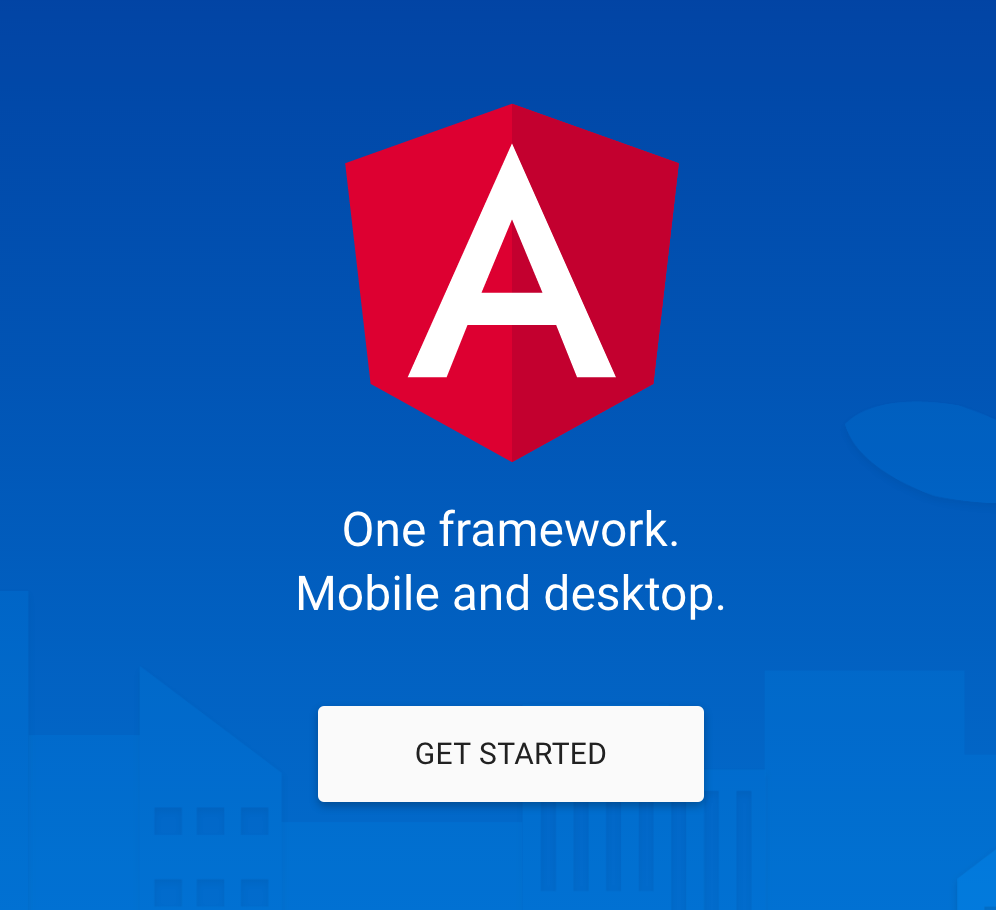このEntryは、G's ACADEMY TOKYOのトレーナー/チューターによる投稿記事です。
授業の中で出たちょっとした質問や疑問、トレーナーが関心のある新技術等を脈絡なく綴っていきます。
こんにちは!
ジーズアカデミーチューターの岸です。
JavaScriptフレームワークのひとつであるAngularJSの最新バージョン「Angular2」の正式リリースが間近に迫っていますね!
今回は、そのAngular2をとにかく簡単にさくっと試せる簡単な手順をご紹介します!
Angular2でHello World的なことをする
以下の公式のチュートリアル(英語)に基いています。
https://angular.io/docs/ts/latest/quickstart.html
Angular2は、JavaScriptの他にTypeScript、Dartでも書けますが、推奨されているTypeScriptで進めていきます。
※手順をrc.5の内容に書き換えました。ご指摘いただきまして誠にありがとうございました。
環境構築
アプリケーションを動作させるためのフォルダ(以下、アプリケーションフォルダ)を作成します。
$ mkdir angular2-quickstart
$ cd angular2-quickstart
ローカルにnpmパッケージをインストールします。
Node.jsがインストールされていない方は、こちらからインストールしてください。
npmは以下のコマンドでインストールできます。
$ npm install npm -g
以下の4ファイルをアプリケーションフォルダ直下に作成します。
1.package.json - アプリケーションで使用するパッケージやスクリプトを定義するファイル
{
"name": "angular2-quickstart",
"version": "1.0.0",
"scripts": {
"start": "tsc && concurrently \"npm run tsc:w\" \"npm run lite\" ",
"lite": "lite-server",
"postinstall": "typings install",
"tsc": "tsc",
"tsc:w": "tsc -w",
"typings": "typings"
},
"license": "ISC",
"dependencies": {
"@angular/common": "2.0.0-rc.5",
"@angular/compiler": "2.0.0-rc.5",
"@angular/core": "2.0.0-rc.5",
"@angular/forms": "0.3.0",
"@angular/http": "2.0.0-rc.5",
"@angular/platform-browser": "2.0.0-rc.5",
"@angular/platform-browser-dynamic": "2.0.0-rc.5",
"@angular/router": "3.0.0-rc.1",
"@angular/router-deprecated": "2.0.0-rc.2",
"@angular/upgrade": "2.0.0-rc.5",
"systemjs": "0.19.27",
"core-js": "^2.4.0",
"reflect-metadata": "^0.1.3",
"rxjs": "5.0.0-beta.6",
"zone.js": "^0.6.12",
"angular2-in-memory-web-api": "0.0.15",
"bootstrap": "^3.3.6"
},
"devDependencies": {
"concurrently": "^2.0.0",
"lite-server": "^2.2.0",
"typescript": "^1.8.10",
"typings":"^1.0.4"
}
}
2.tsconfig.json - TypeScriptコンパイラの設定ファイル
{
"compilerOptions": {
"target": "es5",
"module": "commonjs",
"moduleResolution": "node",
"sourceMap": true,
"emitDecoratorMetadata": true,
"experimentalDecorators": true,
"removeComments": false,
"noImplicitAny": false
}
}
3.typings.json - TypeScriptの定義ファイル
{
"globalDependencies": {
"core-js": "registry:dt/core-js#0.0.0+20160602141332",
"jasmine": "registry:dt/jasmine#2.2.0+20160621224255",
"node": "registry:dt/node#6.0.0+20160807145350"
}
}
4.systemjs.config.js - SystemJSの設定ファイル
/**
* System configuration for Angular 2 samples
* Adjust as necessary for your application needs.
*/
(function(global) {
// map tells the System loader where to look for things
var map = {
'app': 'app', // 'dist',
'@angular': 'node_modules/@angular',
'angular2-in-memory-web-api': 'node_modules/angular2-in-memory-web-api',
'rxjs': 'node_modules/rxjs'
};
// packages tells the System loader how to load when no filename and/or no extension
var packages = {
'app': { main: 'main.js', defaultExtension: 'js' },
'rxjs': { defaultExtension: 'js' },
'angular2-in-memory-web-api': { main: 'index.js', defaultExtension: 'js' },
};
var ngPackageNames = [
'common',
'compiler',
'core',
'forms',
'http',
'platform-browser',
'platform-browser-dynamic',
'router',
'router-deprecated',
'upgrade',
];
// Individual files (~300 requests):
function packIndex(pkgName) {
packages['@angular/'+pkgName] = { main: 'index.js', defaultExtension: 'js' };
}
// Bundled (~40 requests):
function packUmd(pkgName) {
packages['@angular/'+pkgName] = { main: 'bundles/' + pkgName + '.umd.js', defaultExtension: 'js' };
}
// Most environments should use UMD; some (Karma) need the individual index files
var setPackageConfig = System.packageWithIndex ? packIndex : packUmd;
// Add package entries for angular packages
ngPackageNames.forEach(setPackageConfig);
var config = {
map: map,
packages: packages
};
System.config(config);
})(this);
package.jsonに記述された各npmパッケージをインストールします。
$ npm install
typingsフォルダが生成されないことがありますので、その場合は手動でインストールします。
$ npm run typings install
ファイルを作成
アプリケーションフォルダ直下にappフォルダを作成します。
$ mkdir app
appフォルダの直下に以下の3ファイルを作成します。
1.app.component.ts - アプリケーションのコンポーネントを記述したファイル
import { Component } from '@angular/core';
@Component({
selector: 'my-app',
template: '<h1>My First Angular 2 App</h1>'
})
export class AppComponent { }
2.app.module.ts - アプリケーションを構成するためのモジュールを記述したファイル
import { NgModule } from '@angular/core';
import { BrowserModule } from '@angular/platform-browser';
import { AppComponent } from './app.component';
@NgModule({
imports: [ BrowserModule ],
declarations: [ AppComponent ],
bootstrap: [ AppComponent ]
})
export class AppModule { }
3.main.ts - アプリケーションを起動するために必要なものを呼び出すファイル
import { platformBrowserDynamic } from '@angular/platform-browser-dynamic';
import { AppModule } from './app.module';
platformBrowserDynamic().bootstrapModule(AppModule);
さらに、アプリケーションフォルダ直下に、HTMLファイルおよびCSSファイルを作成します。
<html>
<head>
<title>Angular 2 QuickStart</title>
<meta charset="UTF-8">
<meta name="viewport" content="width=device-width, initial-scale=1">
<link rel="stylesheet" href="styles.css">
<!-- 1. Load libraries -->
<!-- Polyfill(s) for older browsers -->
<script src="node_modules/core-js/client/shim.min.js"></script>
<script src="node_modules/zone.js/dist/zone.js"></script>
<script src="node_modules/reflect-metadata/Reflect.js"></script>
<script src="node_modules/systemjs/dist/system.src.js"></script>
<!-- 2. Configure SystemJS -->
<script src="systemjs.config.js"></script>
<script>
System.import('app').catch(function(err){ console.error(err); });
</script>
</head>
<!-- 3. Display the application -->
<body>
<my-app>Loading...</my-app>
</body>
</html>
/* Master Styles */
h1 {
color: #369;
font-family: Arial, Helvetica, sans-serif;
font-size: 250%;
}
h2, h3 {
color: #444;
font-family: Arial, Helvetica, sans-serif;
font-weight: lighter;
}
body {
margin: 2em;
}
最終的なファイル構成は以下のとおりになります。
angular2-quickstart
|
├─app
| ├─app.component.ts
| ├─app.module.ts
| └─main.ts
├─node_modules ...
├─typings ...
├─index.html
├─package.json
├─styles.css
├─systemjs.config.js
├─tsconfig.json
└─typings.json
実行
以下のコマンドで実行します。
$ npm start
うまくいくと以下の画面が表示されます。
Angular Componentの中身を変更してみる
app.component.tsの中にある@Componentの中身をちょっと書き換えたいと思います。
app.component.tsを以下のように書き換えてみます。
import { Component } from '@angular/core';
@Component({
selector: 'my-app',
templateUrl: 'template.html',
styleUrls: ['template.css']
})
class AppComponent { }
アプリケーションフォルダの直下にテンプレートのhtmlファイル、それに適用するCSSファイルを作成します。
<h1>テンプレートです。</h1>
h1 {
color: red;
}
これで実行してみると・・・
別ファイルとして分離したhtmlとcssがComponentのテンプレート、スタイルとして適用されていることを確認できました。
次に、AngularJSの特徴のひとつであるデータバインディングを試してみます。
app.component.tsとtemplate.htmlを以下のように書き換えてみます。
import { Component } from '@angular/core';
@Component({
selector: 'my-app',
templateUrl: 'template.html',
styleUrls: ['template.css']
})
export class AppComponent {
message = 'コンポーネントからのメッセージです。'
}
<h1>{{message}}</h1>
これで実行してみると・・・
データバインディングがされていることが確認できました。
以上、簡単ではありましたが、Angular2をさくっと試せる手順をご紹介しました。
Angular2に興味があるけどまだ触ってすらいない・・・という方は、ぜひチャレンジしてみてはいかがでしょうか?
以上、G's ACADEMY TOKYOチューターの岸によるTrainer's Recipeでした。



